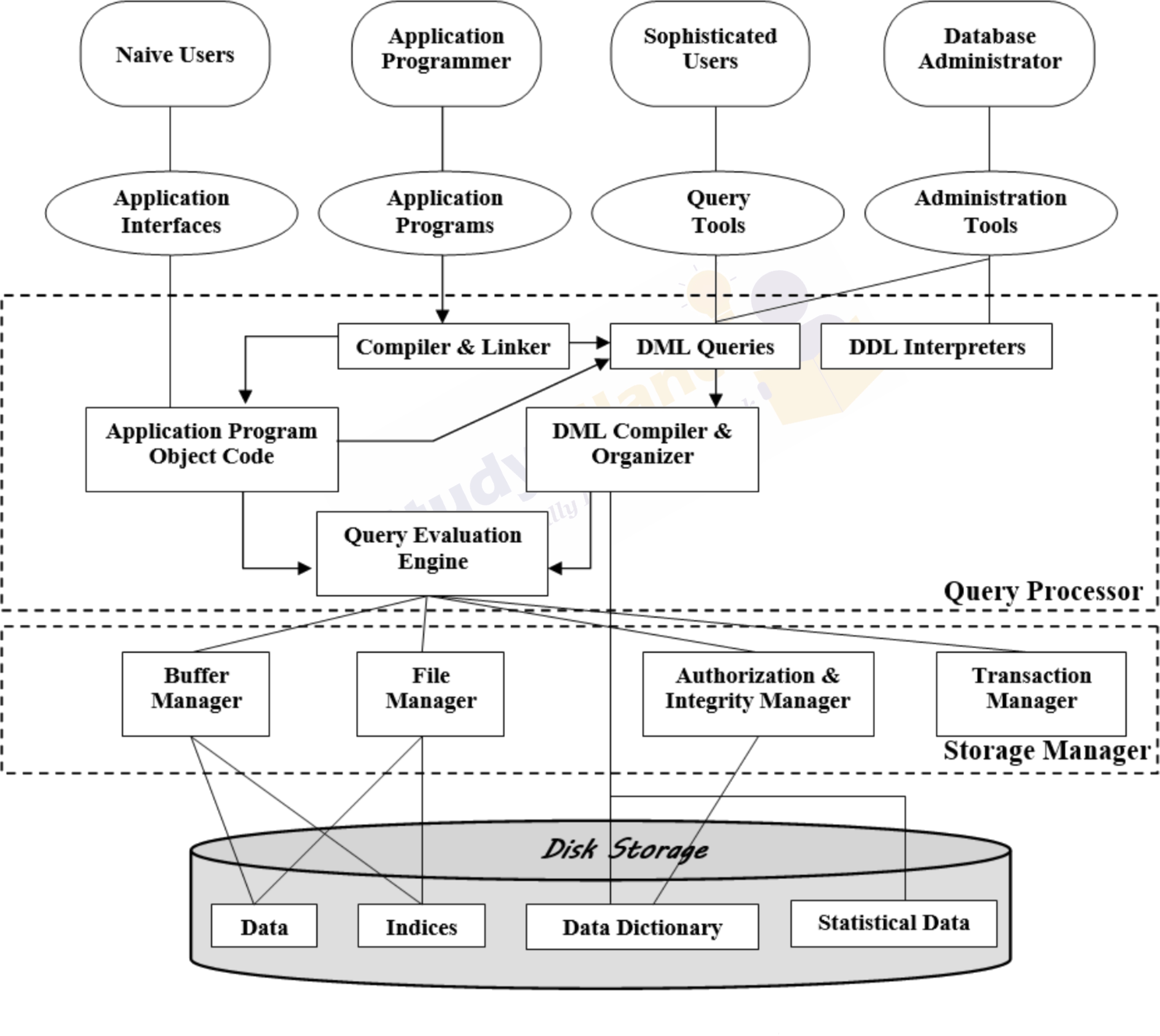Structure of DBMS
Database System Architecture
The typical structure of DBMS is based on Relational data model.
The top part of the architecture shows application interfaces used by naive users, application programs created by application programmers, query tools used by sophisticated users and administration tools used by database administrator.
The lowest part of the architecture is for disk storage.
The Middle two parts(Query processor and storage manager) are important components of database architecture.

Query processor:
The interactive query processor helps the database system to simplify and facilitate access to data. It consists of DDL(Data Definition Language) interpreter, DML(Data Manipulation Language) compiler and query evaluation engine.
The following are various functionalities and components of query processor
- DDL interpreter: This is basically a translator which interprets the DDL statements in data dictionaries.
- DML compiler: It translates DML statements query language into an evaluation plan. This plan consists of the instructions which query evaluation engine understands.
- Query evaluation engine: It executes the low-level instructions generated by the DML compiler.
When a user issues a query, the parsed query is presented to a query optimizer, which uses information about how the data is stored to produce an efficient execution plan for evaluating the query. An execution plan is a blueprint for evaluating a query. It is evaluated by query evaluation engine.
Storage manager:
Storage manager is the component of database system that provides interface between the low level data stored in the database and the application programs and queries submitted to the system.
The storage manager is responsible for storing, retrieving, and updating data in the database. The storage manager components include
- Authorization and integrity manager: Validates the users who want to access the data and tests for integrity constraints.
- Transaction manager: Ensures that the database remains in consistent despite of system failures and concurrent transaction execution proceeds without conflicting.
- File manager: Manages allocation of space on disk storage and representation of the information on disk.
- Buffer manager: Manages the fetching of data from disk storage into main memory. The buffer manager also decides what data to cache in main memory. Buffer manager is a crucial part of database system.
Storage manager implements several data structures such as
- Data files: Used for storing database itself.
- Data dictionary: Used for storing metadata, particularly schema of database.
- Indices: Indices are used to provide fast access to data items present in the database
Next Topic :Database Design in DBMS